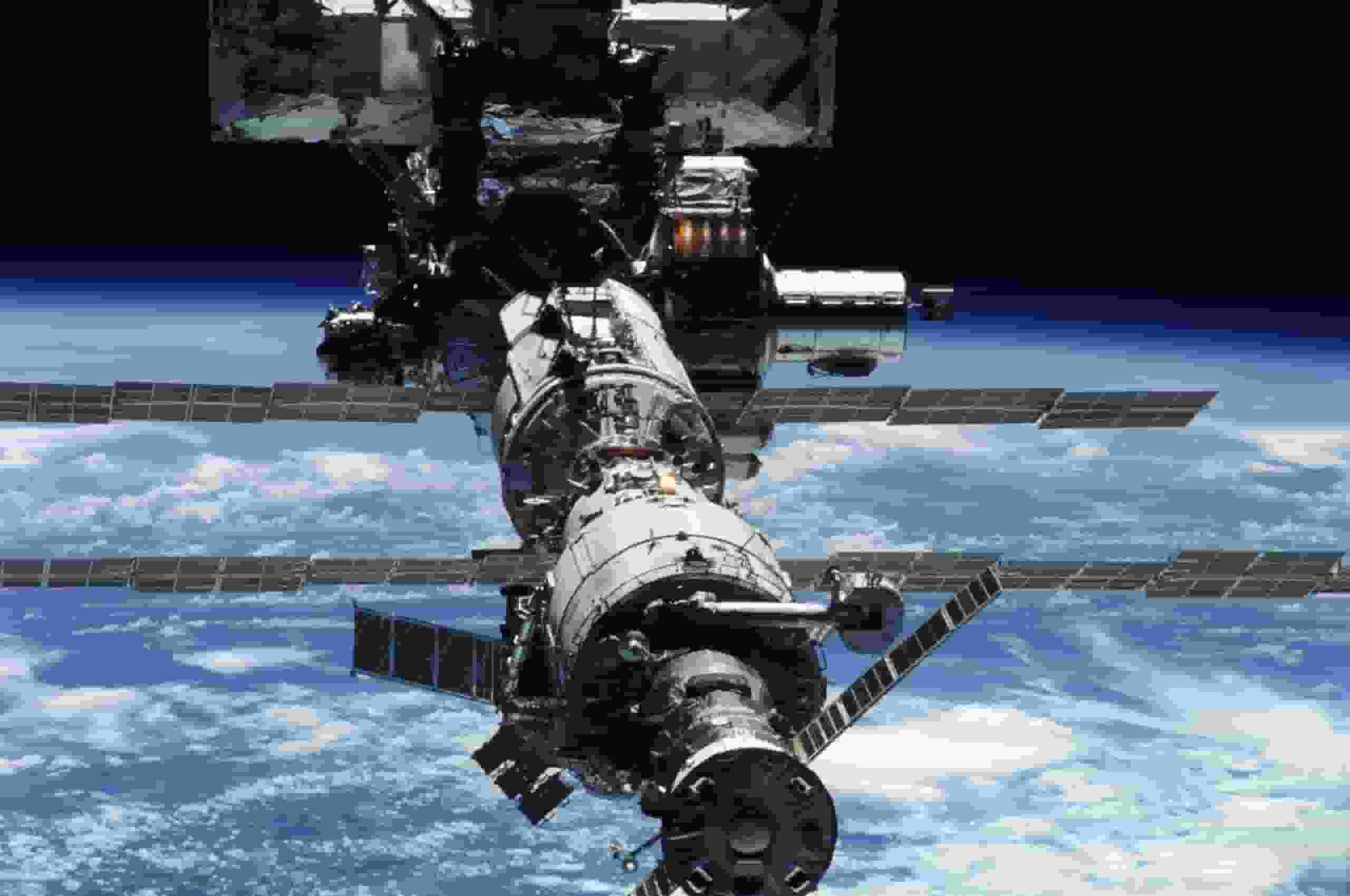Just hours before a fresh cargo ship is scheduled to arrive, the International Space Station maneuvered out of the path of space debris for the second time this year.
Russian government space agency Roscosmos officials posted on Telegram that a Russian Progress cargo spacecraft linked to the International Space Station (ISS) ignited its engines on Friday, November 10, in an attempt to escape space debris. Google translated the message automatically. (Space.com contacted NASA representatives and is seeking confirmation of the move and the kind of debris from the agency.)
The engine burn lasted five minutes, or 316.5 seconds, and happened at 10:07 a.m. EST (1507 GMT or 6:07 p.m. in Moscow), the Roscosmos statement said, elevating the ISS’s orbit by around 3,000 feet (900 meters).
The potential effects of this maneuver, if verified, on ISS operations have not yet been made public by NASA. There should be a SpaceX Dragon cargo ship there in a few hours after it launched on Thursday, Nov. 8. At 3:45 a.m., Dragon is scheduled to dock with the International Space Station. EST (0845 GMT) tomorrow, November 10, barring any alterations to the itinerary.
Elon Musk, a businessman, created SpaceX, a commercial space enterprise whose Dragon and Crew Dragon spacecraft made history in the realm of privately funded space flight.
The first test flight of SpaceX’s Crew Dragon, a spaceship intended to transport humans into orbit, concluded in March 2019 to the International Space Station (ISS). Before that, in 2012, the Dragon cargo spacecraft created history by becoming the first private spacecraft to dock with the International Space Station (ISS). Under commercial agreements with NASA, Dragon has carried goods to the International Space Station ever since.
SpaceX became the first commercial spaceflight firm to carry a crewed spaceship to orbit when it flew two NASA astronauts to the International Space Station (ISS) in the summer of 2020.
The American football field-sized complex is moving more often than ever, even though the moves designed to dodge ISS debris are expected to be cautious. NASA authorities said in a quarterly debris report that, as of December 2022, the International Space Station (ISS) had maneuvered out of the path of space debris 32 times since 1999.
By the time the most recent data was made public in the summer, the number of orbital debris maneuverings had increased to 37 overall, including three in the month of August 2023 alone.
But it’s not just the ISS that needs to change orbit more frequently. As the risk of debris increases, many Earth-orbiting activities are being impacted by the growing number of satellites traveling into space, which is being driven by the decreasing size of satellites, which consequently enhances launch affordability.
For instance, SpaceX submitted a report to the U.S. in June. According to the Federal Communications Commission (FCC), between December 1, 2022, and May 31, 2023, the Starlink broadband satellites had to execute avoidance maneuvers more than 25,000 times.
Behind 1,300 of those maneuvers, attempts were made to escape the debris left behind from a Russian anti-satellite missile test that was widely denounced in November 2021 and briefly endangered the International Space Station. The test debris continues to be the biggest operational risk to Starlink, according to SpaceX officials in the FCC submission.
As of May 2023, SpaceX had around 4,500 Starlink satellites in operation. Based on SpaceX data, this translates to an average dodge rate of one spacecraft each month. During that reporting period, there were twice as many Starlink dodges overall as there were between June and November 2022, when Starlink had close to 3,300 active members in orbit.
In contrast, SpaceX follows stringent guidelines to ensure the security of their satellites. When there is a chance greater than one in 100,000 that an item may cross the route of a certain Starlink satellite, the satellites are required to relocate. Additionally, SpaceX’s requirements—a 1 in 10,000 chance—are ten times greater than those of NASA and other international space organizations.
Generally speaking, NASA claims that station operations are not adversely affected by ISS motions. According to agency officials, the agency’s instructions call for a clear passage for the International Space Station (ISS) in the form of a “pizza box” in space surrounding the station’s orbit. This shape should be roughly 2.5 by 30 by 30 miles (4 by 50 by 50 kilometers) with the ISS at its core. NASA receives tracking data from the US military, which is able to follow objects with a diameter of up to 2 inches (5 cm).
The space station consortium often depends on fueled and parked cargo ships to handle the heavy lifting while adjusting the International Space Station’s (ISS) orbit to avoid space debris or Earth’s atmosphere.
Russia has already sent Progress supply ships for ISS orbital extensions. However, NASA is also strengthening its own capabilities, particularly in light of the fact that both Russia and NASA are creating separate coalitions for further space research following Russia’s February 2022-initiated conflict in Ukraine. One such mission that NASA assigned to a Northrop Grumman Cygnus spacecraft was to raise the International Space Station’s orbit in June 2022.
US officials are likewise interested in space junk. With the establishment of its new Space Bureau in April, the Federal Communications Commission promised to concentrate on “satellite and orbital debris rules”. Additionally, the FCC has promised to incorporate the potential and dangers associated with in-space servicing, assembly, and manufacturing (ISAM) when it upgrades its regulatory framework for orbital trash.
Numerous initiatives are also underway to manually remove space junk from orbit. Paradoxically, though, orbital debris struck the goal of the European Space Agency’s ClearSpace-1 cleaning mission in August.




![Tyson Foods Plant [Photo: Food Manufacturing]](https://southarkansassun.com/wp-content/uploads/2023/08/iStock_1185520857__1_.5e441daa51cca-600x337.jpg)








![Silverado Senior Living Management Inc. [Photo: Los Angeles Times]](https://southarkansassun.com/wp-content/uploads/2023/10/download-6-4-600x337.jpg)

![China's Wuhan Institute of Virology [Photo: Nature]](https://southarkansassun.com/wp-content/uploads/2023/09/d41586-021-01529-3_19239608-600x337.jpg)















